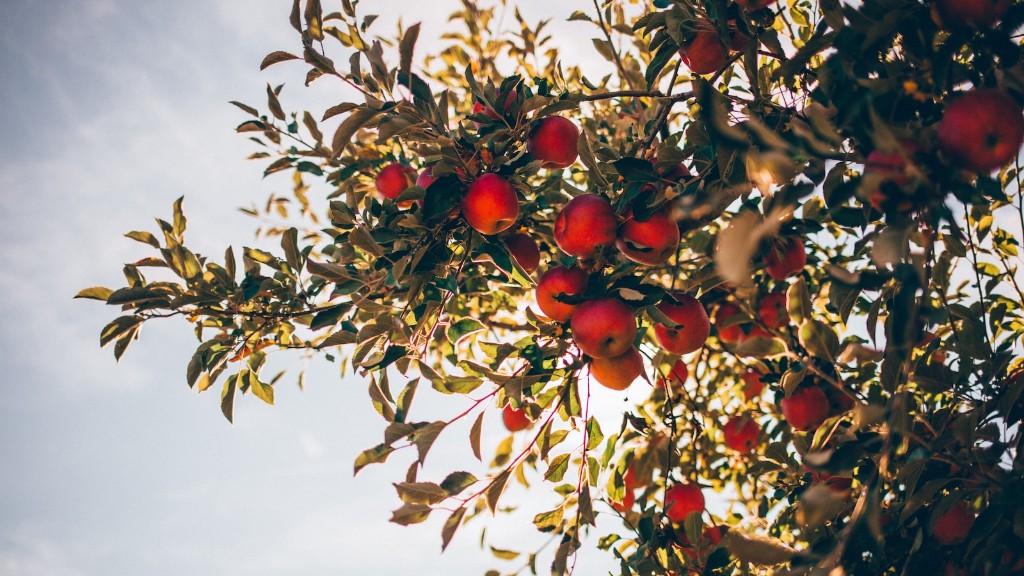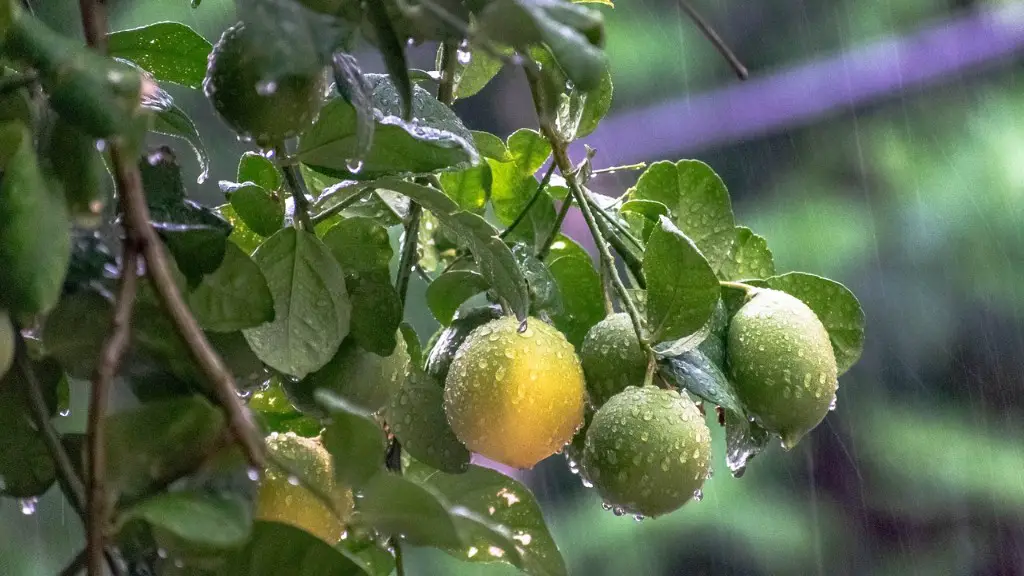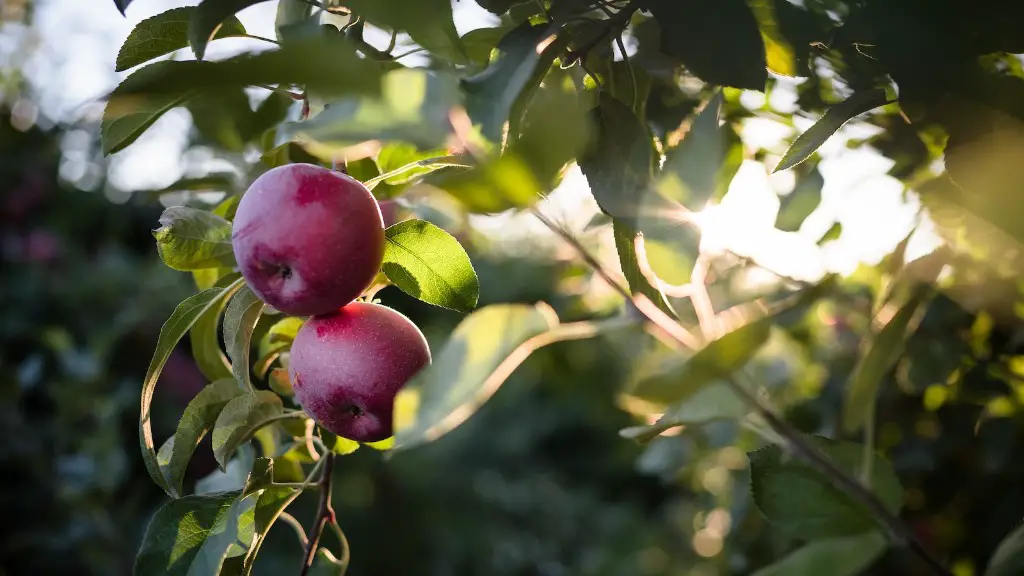Apple trees are lovely additions to any yard and with a little care, they can produce an abundance of fruit for you and your family to enjoy. Growing an apple tree is not difficult, but there are a few things you need to do to ensure a healthy, productive tree.
You can grow an apple tree from a seed, but it is much easier to grow one from a young tree that has already been started. To plant an apple tree, dig a hole that is twice as wide and deep as the tree’s root ball. Place the tree in the hole and fill in the dirt around it, packing it gently. Water the tree well.
How do you grow an apple tree at home?
Apple trees need full sun to thrive and should be planted in well-drained soil that doesn’t get too wet. They should never be planted in low-lying or wet patches.
When planting an apple tree, be sure to dig a hole that is twice the diameter of the root system and 2 feet deep. This will give the roots plenty of room to grow and establish themselves. Loosen the soil on the sides of the planting hole and add some of the loose soil back into the hole before planting the tree. This will help the roots to spread out and avoid being crowded or twisted.
Can I grow an apple tree from a seed
Apple trees can be grown from apple seeds, but in most cases, they will not be the same as the parent tree. Seedling apple trees are genetically different and usually inferior to the parent tree.
Apple trees need full sun to produce well, well-drained soil, and light to medium-textured soils. They should be able to retain some moisture.
Do you need 2 apple trees to produce fruit?
Apple trees are self-unfruitful, meaning they need another variety of apple tree to cross-pollinate in order to produce fruit. Plant at least two different apple tree varieties within 50 feet of one another to ensure a good fruit set. Some apple varieties, such as Golden Delicious, will produce a crop without cross-pollination from a second variety. However, for the best fruit production, it is still recommended to plant two different varieties.
Apple trees are notoriously difficult to grow. They are susceptible to a wide variety of pests and diseases, and often produce wormy, bitter, and unappealing fruit. If you’re considering growing apple trees, be prepared for a challenge.
What time of year is best to plant apple trees?
The best time to plant apple trees in cold northern climates is spring. In areas where winter is less severe, early spring or late fall planting is recommended.
If you’re patient and willing to wait a few years, a standard apple tree will provide you with a bountiful crop of delicious apples! They typically take four to eight years to reach maturity, but it’ll be worth the wait when you’re able to enjoy their tasty fruits. Just be sure to give your tree the proper care and attention it needs during its lifespan.
How many years does it take for an apple tree to produce
There are several benefits to growing semi-dwarf or dwarf apple trees. These trees are smaller and can be grown in a variety of spaces, including areas with limited gardening space. Additionally, semi-dwarf and dwarf apple trees produce full-sized apples in a shorter time frame than standard or full-sized trees. Semi-dwarf and dwarf apple trees are a good option for those looking to add apples to their garden with minimal effort.
Apple trees can be grown from the seeds inside the fruit, but it takes some work. The seeds need to be germinated, and then the young trees need to be carefully cared for. With patience, you can have your own fruit-bearing apple tree.
How many apple seeds do you need to grow a apple tree?
This will ensure that you have a few apple trees growing in your yard or garden. Planting extra seeds also gives you the opportunity to share apple trees with friends or family.
Apple seeds typically take 60 to 90 days to germinate. They need moist and cold conditions to sprout, so it’s important to keep the paper towel or other growing medium moist (but not waterlogged). When the seedlings have sprouted, they’re ready to be planted.
Do you need 3 apple trees to produce fruit
Self-fertile apple trees will produce fruit without a pollinator, but every tree benefits from a partner. Pollination occurs when pollen is transferred from one tree to another. Having a partner helps to ensure that the pollen is transferred efficiently and effectively.
The Fuji apple is the most popular eating apple in America and an excellent choice for a backyard apple tree! These easy to grow trees produce sizeable fruit and are sweet and juicy with a crisp bite Although Fuji apples brown easily, they have a long shelf life compared to other varieties.
How often do you water an apple tree?
This is because waterlogged roots cannot access the oxygen they need to carry out essential functions. As a result, they will eventually die.
Hermaphroditic trees have both male and female reproductive parts in their flowers, while other species have male and female trees which can be told apart by looking at their flowers. Male reproductive parts are the pollen-laden stamen, and female parts are the egg-holding pistils.
Final Words
To grow an apple tree from a seed, you will need to start with a fresh apple that has been washed and cut in half. remove the seeds from the center of the apple and plant them in a pot filled with well-drained, fertile soil. water the seeds regularly and transplant them into the ground once they have sprouted.
Growing an apple tree is not difficult, but it does take some planning and effort. First, you need to choose a location that gets plenty of sun and has well-drained soil. Then, you need to purchase a young apple tree from a nursery or gardening store. Be sure to select a variety that is suited for your climate. Once you have your tree, you need to plant it and water it regularly. With a little care and patience, you will soon have a healthy apple tree that produces delicious fruit.





